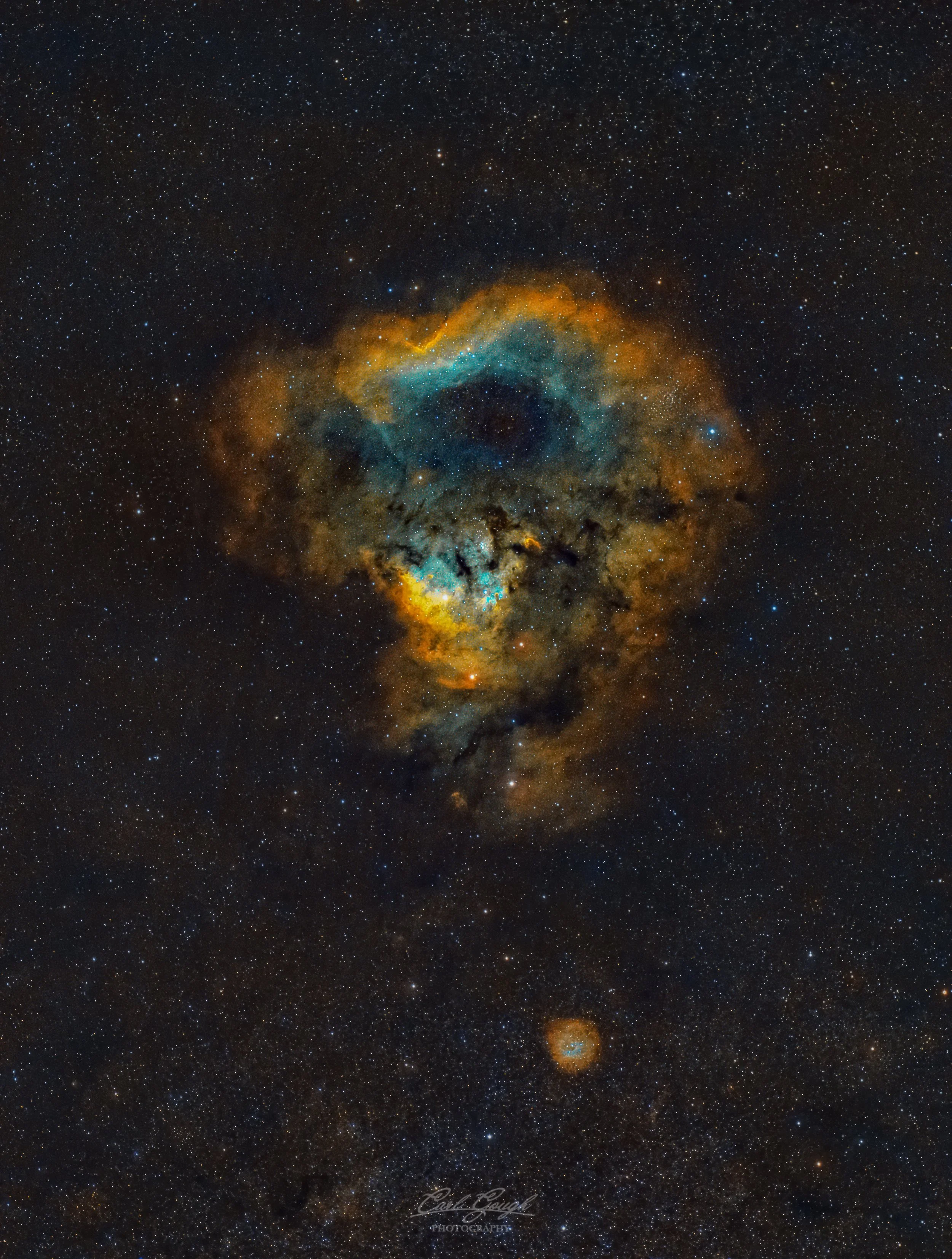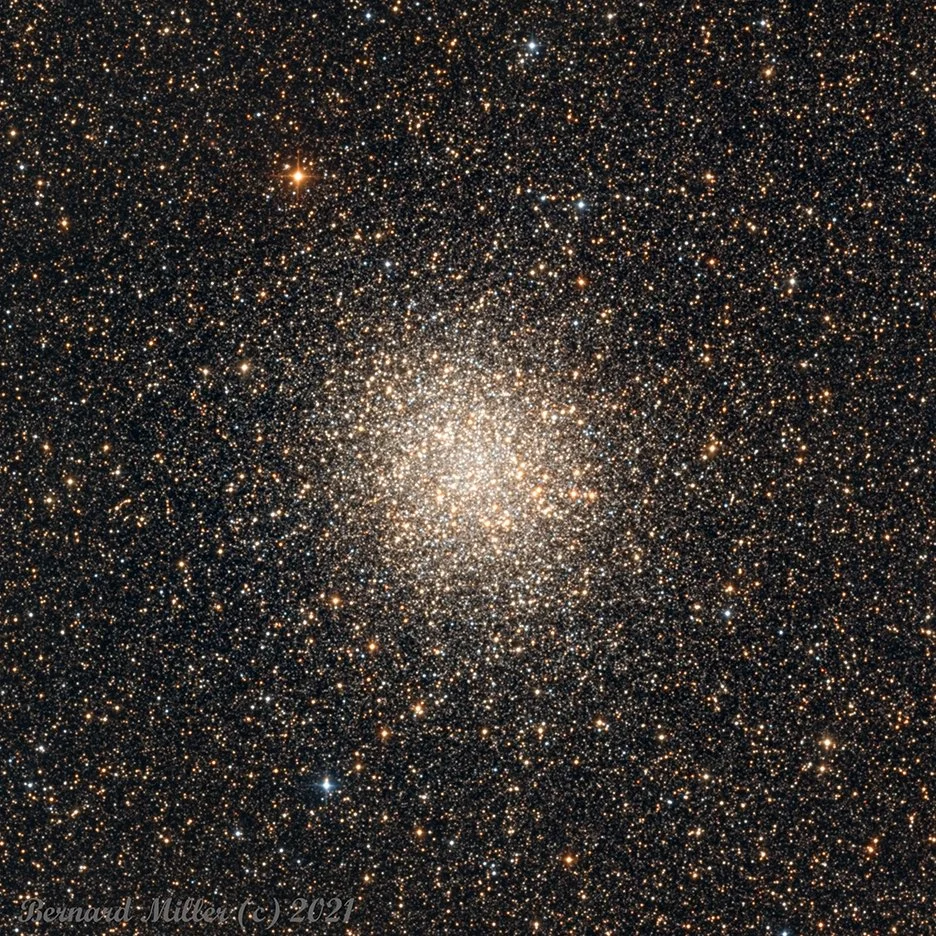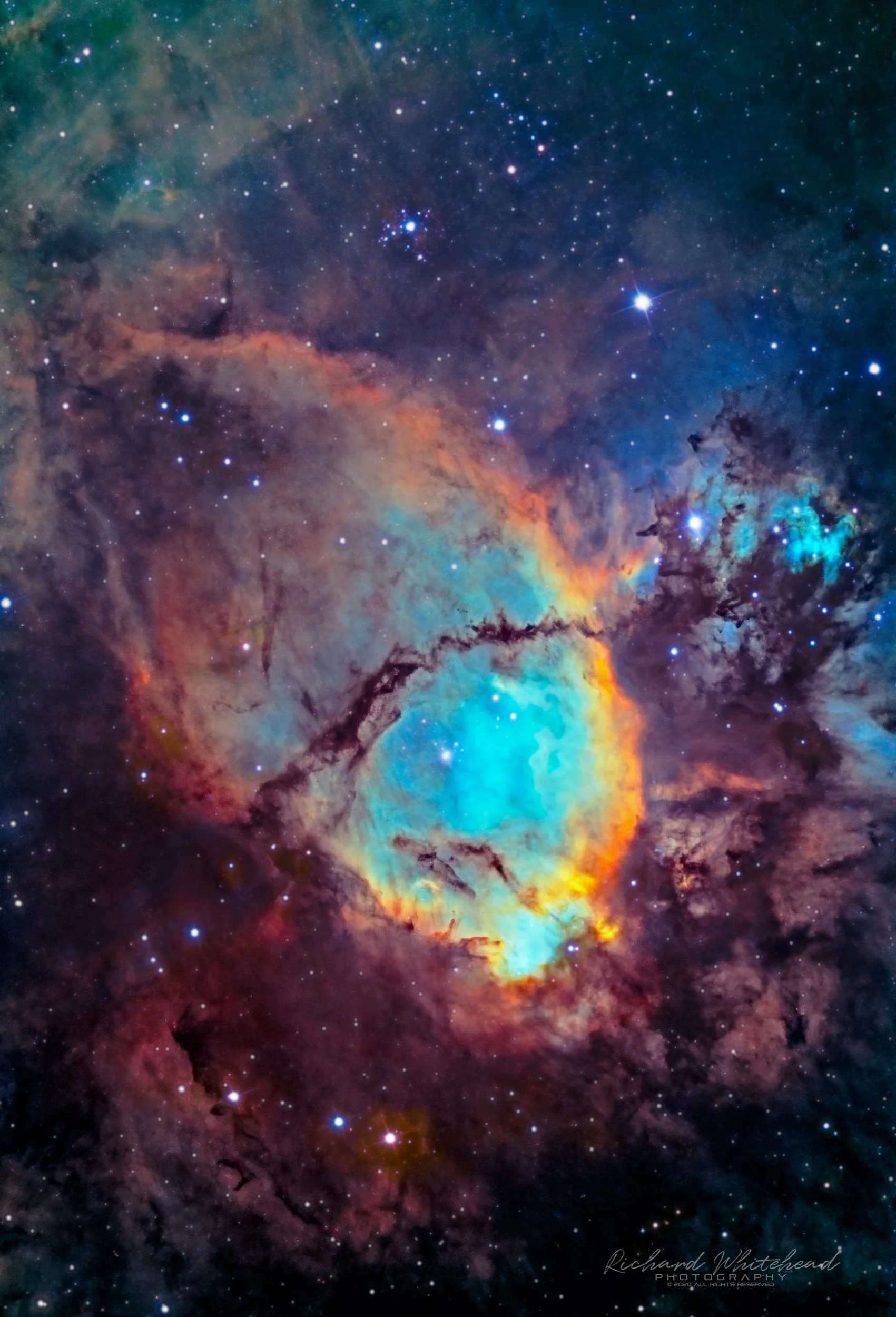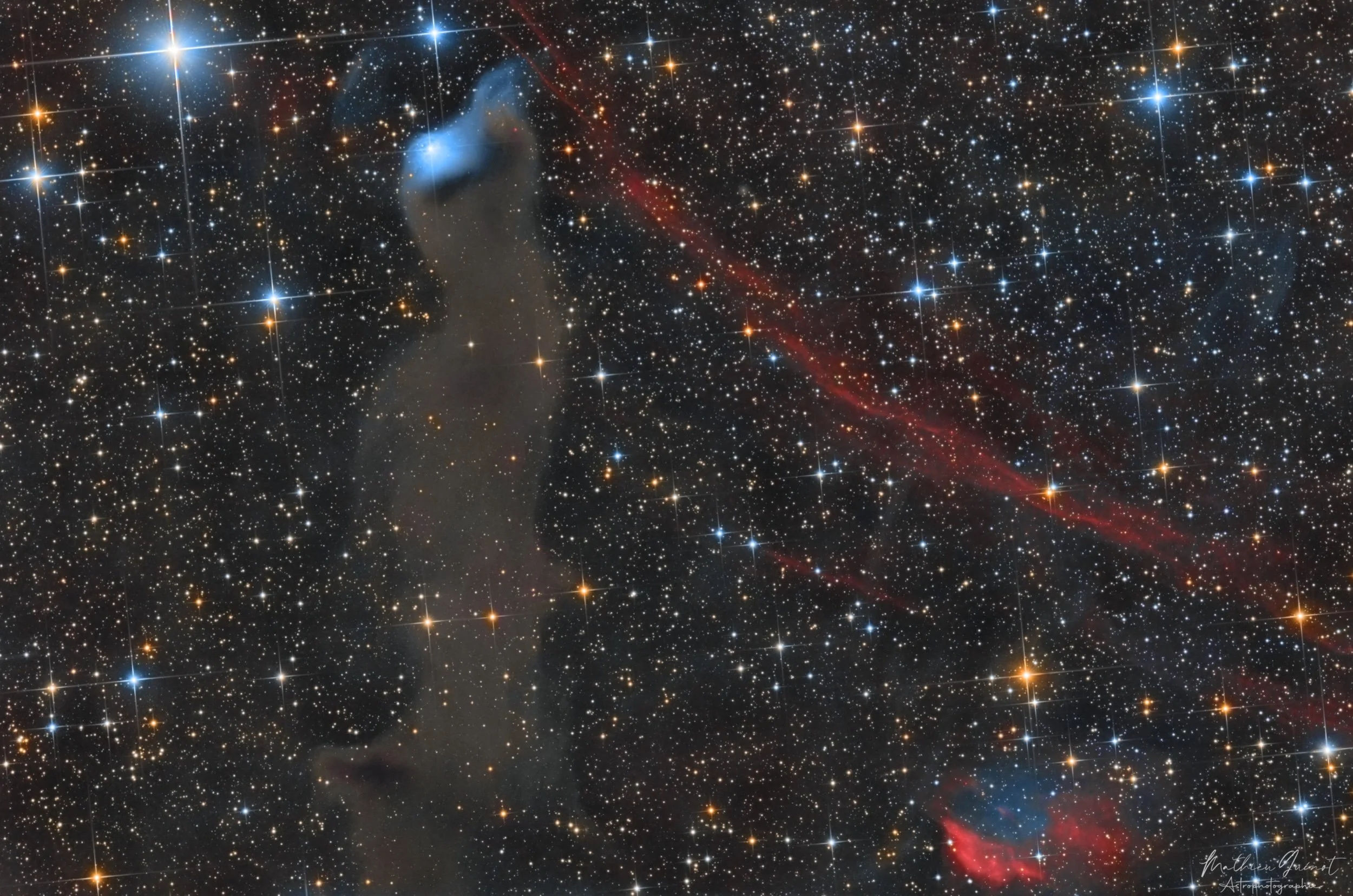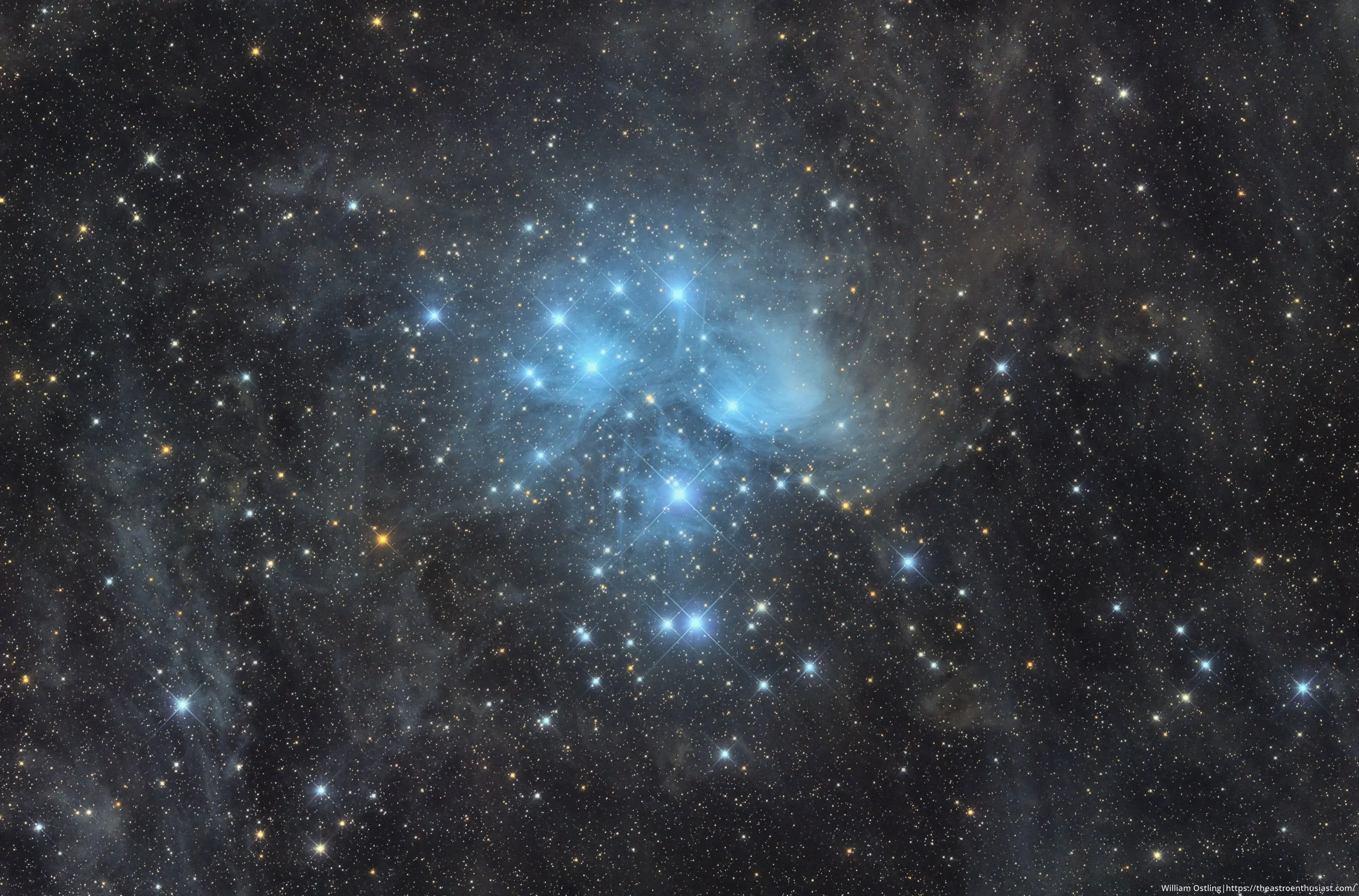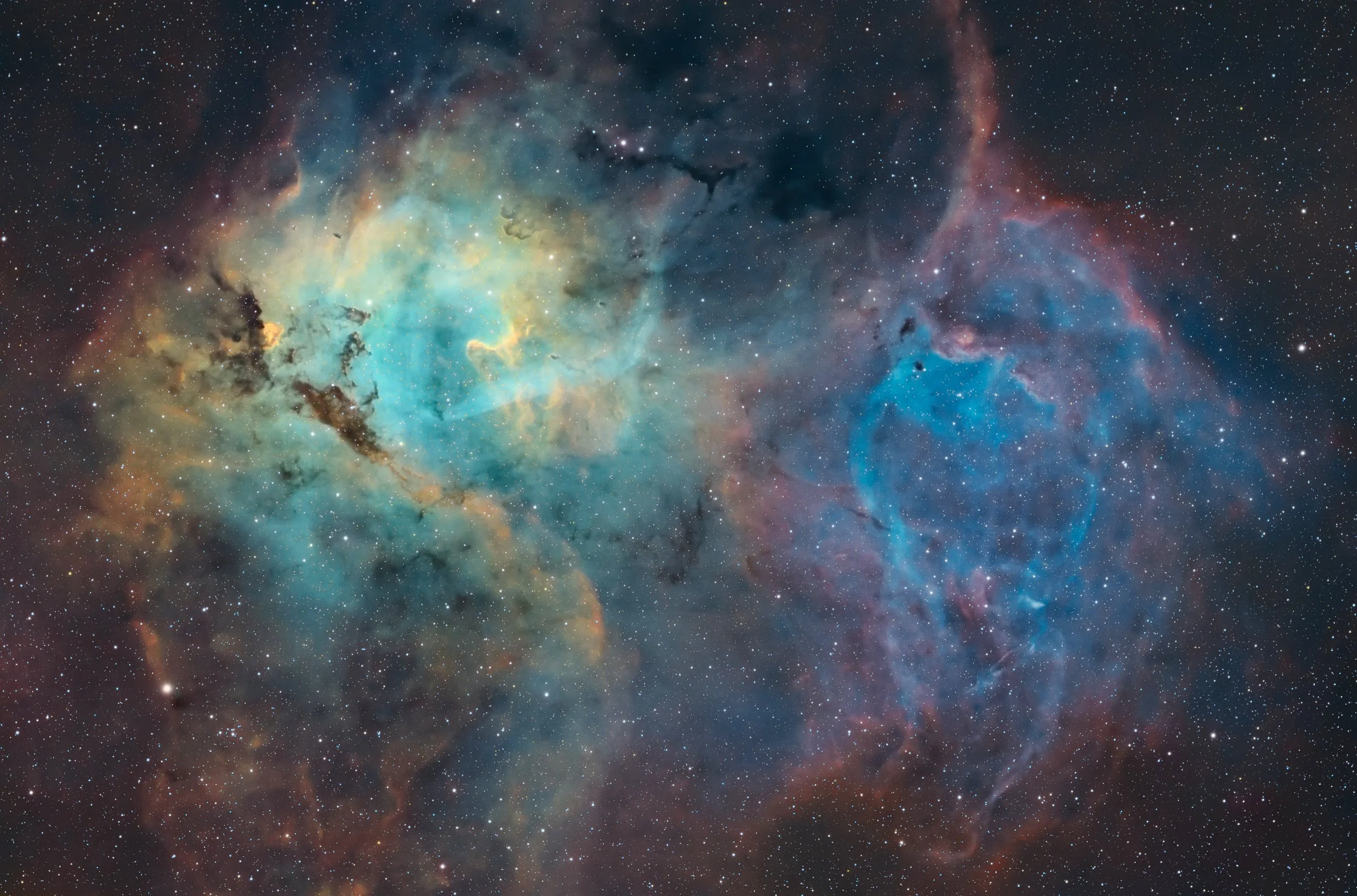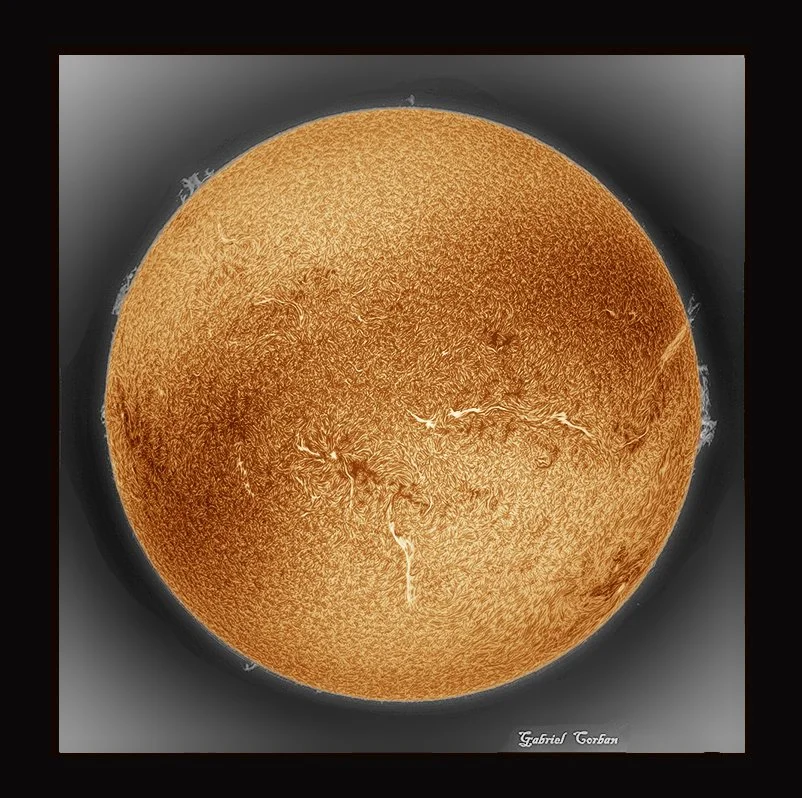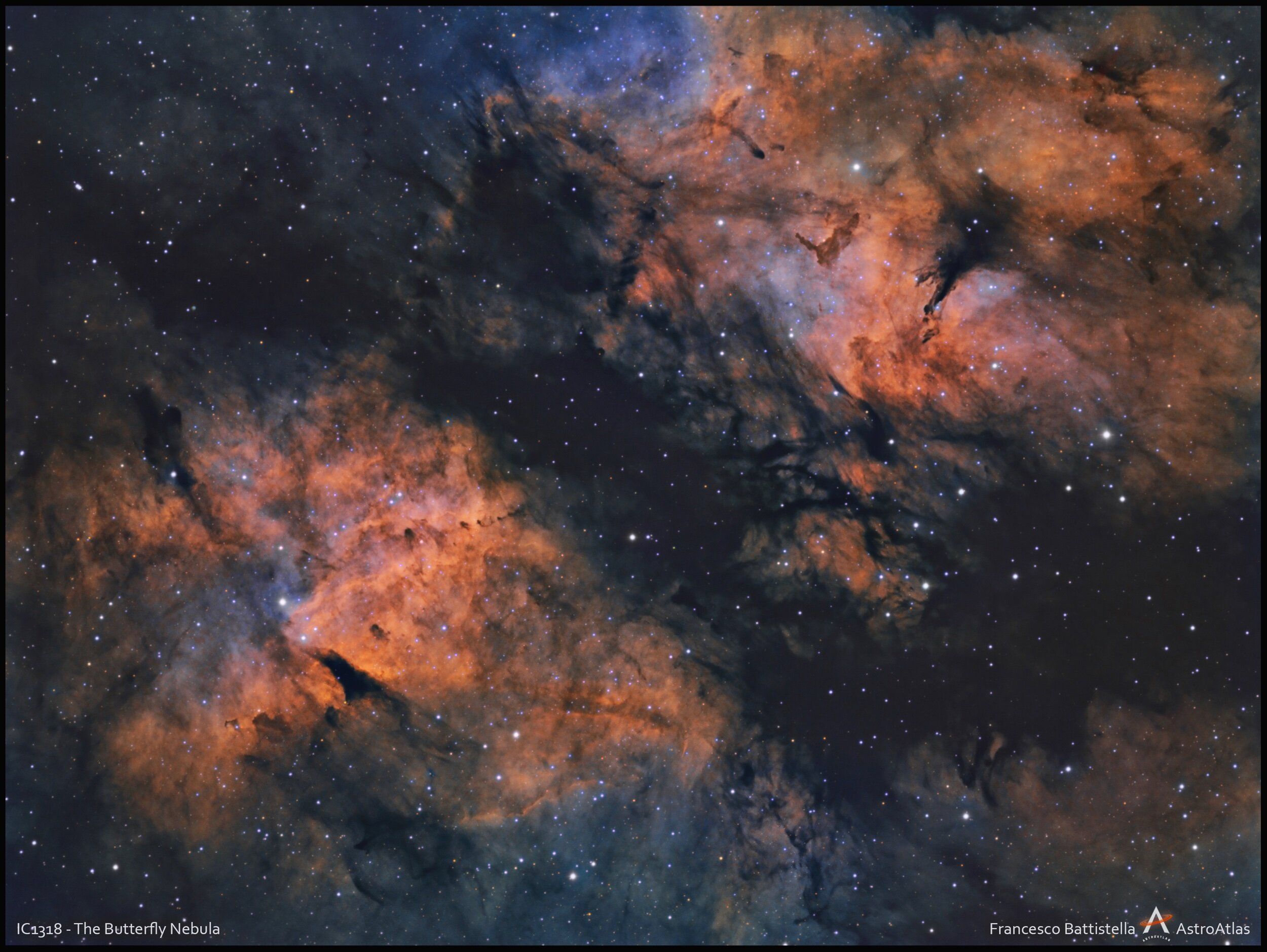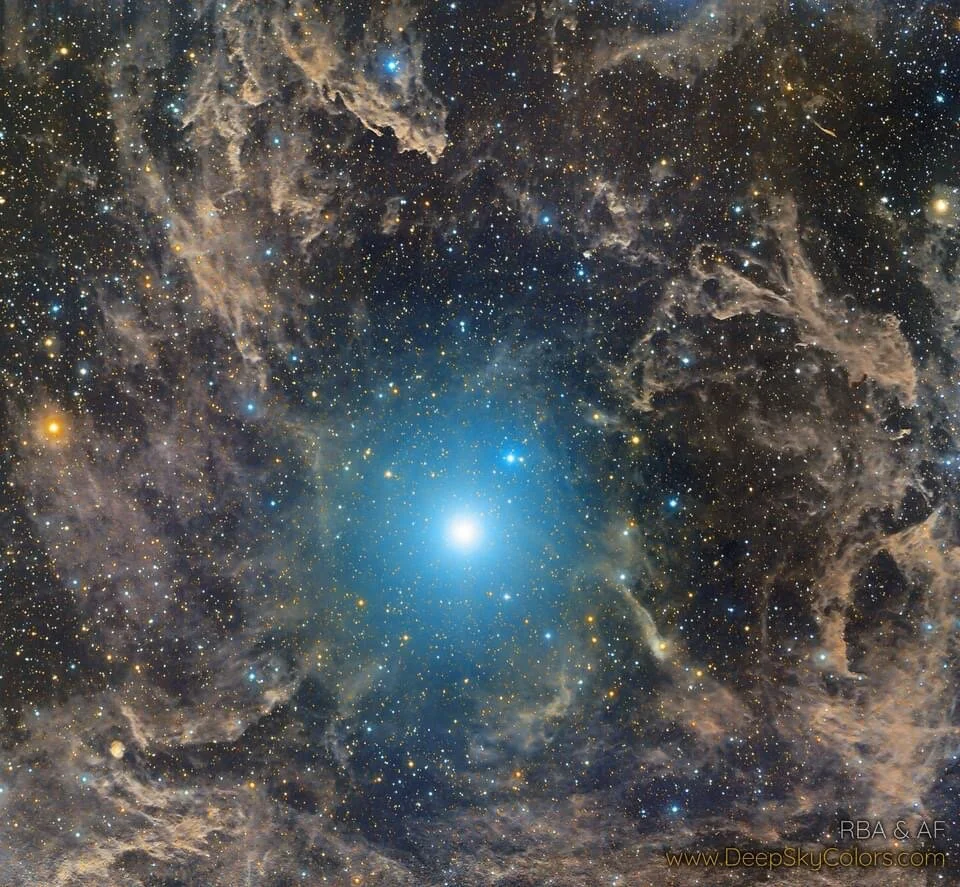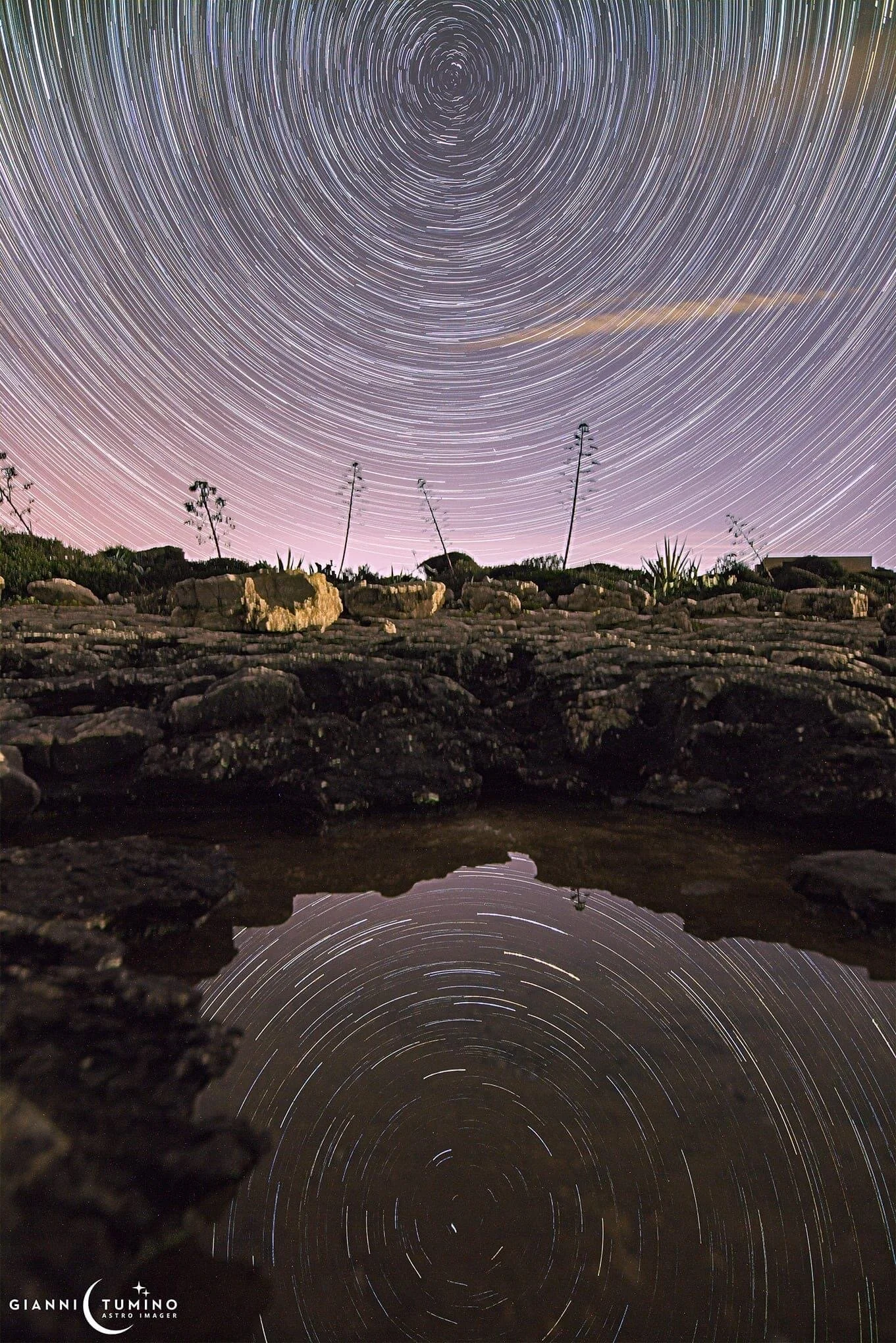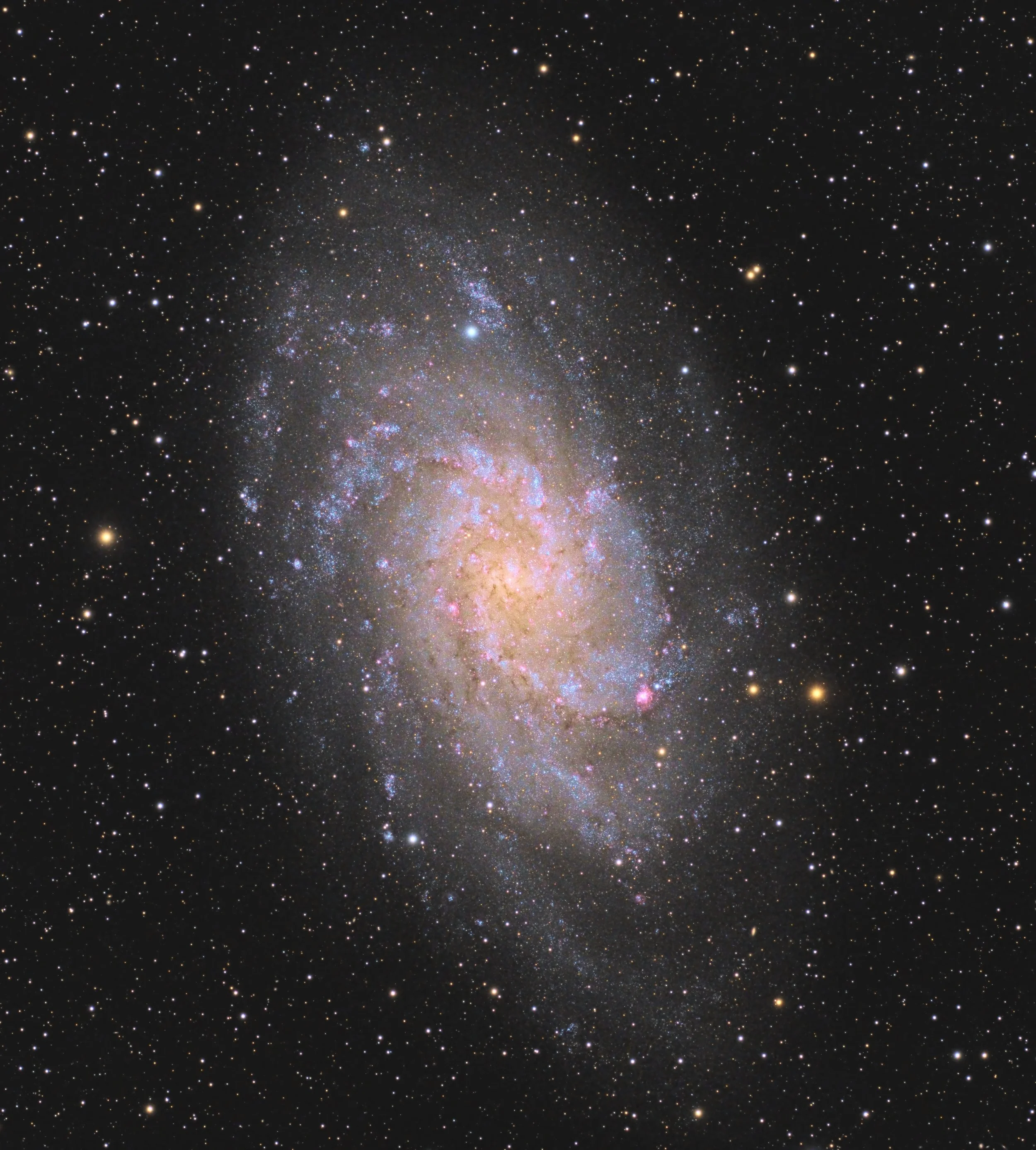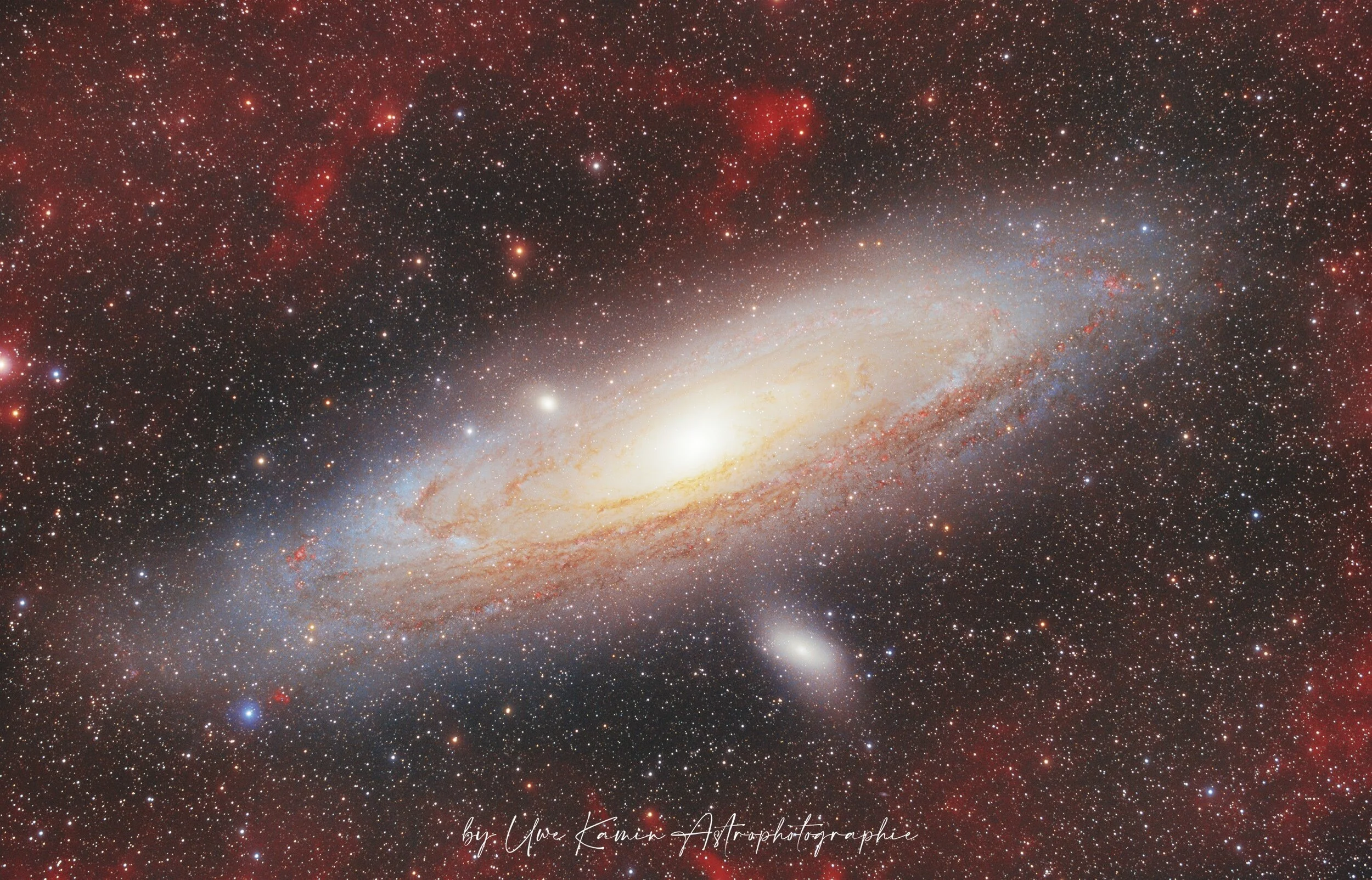
AAPOD2 Image Archives
The Cosmic Question ?
Image Description and Details : Equipment: ZWO ASI 1600mm, Samyang 135mm @f4, EQ6-r equatorial mount, Svbony 50mm guide scope, ZWO ASI 224mc guide camera, ZWO 8 position EFW, Canon to EOS lens adaptor, Baader 1.25" narrowband filters.
Integration:
HA: 60x 600 @ gain 139, temp -20
Sii: 12x 600 @ gain 139, temp -20
Oiii: 15x 600 @ gain 139, temp -20
Taken over multiple night from my Bortle 5 backgarden in Littlehampton, west Sussex. 21st – 26th October’21.
Copyright: carl gough
m22
This is an image of M22. It is a globular cluster about 10,000 light years away in the constellation Sagittarius. It has over 70,000 stars in a diameter of about 100 light years.
October 25, 2021
Location: Rio Hurtado, Chile
Telescope: Planewave CDK-24
Camera: FLI PL16803
Mount: Mathis MI-1000/1250
Luminance: 12x5 minutes (binned 1x1)
Red: 12x5 minutes (binned 1x1)
Green: 12x5 minutes (binned 1x1)
Blue: 12x5 minutes (binned 1x1)
Copyright 2021 Bernard Miller
ic 348
Image description: IC348 to NGC1333 in part of the Large Molecular Cloud in Taurus. Imaged remotely from Spain with the FSQ106 and ZWO-ASI6200MM pro, Unguided on an Paramount MX.
Exposures was just over 7hrs total, 15x 240s in Blue, 30x240s in Green and 24x 240s in Red, Luminance was 33x 300s combined for a super Luminance all binned 1x1. Processed in Pixinsight and Photoshop.
Copyright: Peter Shah
The Fish Head Nebula
Image Description and Details : The Fish head Nebula (IC1795) is a star forming region in Casseopeia, and part of the Heart Nebula Complex. Often seen as an appendage in wide field shots, close up it has some fascinating dust lanes, back lighting and reflection as well as emission components.
Its relatively close to Earth at 6000 light years. This image is shot in SHO ( Hubble) Palette and is full frame ( no crop) at 2650mm Focal length.
I shot this over 4 nights about two weeks ago on my Planewave CDK14 out in the New Mexico desert.
This was my first test of 15 min unguided sub shooting on the Planewave mounted on an L-350 mount. I was able to use about 80% of all subs.
Tech stuff:
Scope : Planewave CDK14
Mount : Planewave L-350
Camera : ZWO ASI 6200 MM Pro ZWO filter wheel Astronomik filters
35 x 15 min Ha 12nm
30 x15 Min OIII 12nm
24 x15 Min SII 12nm
Shot as Bin 1 downsampled to Bin 2x2 in Pixinsight
Processing Pixinsight and PS 2021
Copyright: Richard Whitehead 2021
VdB 152, Barnard 175 & Co
Image Description and Details : Here is a rich field located within the large molecular cloud of Cepheus.
This image was an experiment under my downtown sky, and i am rather happy with the result because, although having probably approached the limits of the Bortle 7 sky, it shows that urban astrophotography still offers possibilities with this type of object.
4 types of nebulae are visible in this image, against a background of nebulosities of interstellar dust:
- the dark nebula Barnard 175, a dense pillar of dust
- the reflection nebula Vdb 152, shining a characteristic blue at the top of this dark pillar
- the old planetary nebula DeHt-5 radiating mainly in the wavelengths of ionized hydrogen and oxygen (red and blue)
- part of the SNR 110.3 + 11.3 supernova remnant whose ionized hydrogen filaments (red) cross the field
Some distant small galaxies are visible in the background despite the density of this area of the Milky Way.
37h30 of exposures carried out in September and October 2021 in Amiens (Bortle 7) through LRVB filters supplemented by H and O filters for NP and supernova remanence with:
newton 250mm f / 3.8
CEM120 mount
Camera ZWO ASI 2600mm
Processing with Pixinsight and Photoshop.
L: 645 x 120s
RGB: 33x120s, 40x120s and 44x120s
H: 85 x 300s
O: 60 x 300s
Copyright: Mathieu Guinot
Grand Pleiades
Image Description and Details : Perhaps the most famous star cluster on the sky, the bright stars of the Pleiades can be seen without binoculars from even the depths of a light-polluted city. With a long exposure from a dark location, though, the dust cloud surrounding the Pleiades star cluster becomes very evident.
Two techniques were used to get this image: framing selection and downsampling. I chose only about 65% of the frames that I actually shot, removing bad signal from out of focus, cloudy, or polluted frames. I also downsampled the image by 50% increasing snr and the amount of dust I imaged.
Equipment:
Nikon D90
Sigma 300mm prime lens
Sky-Watcher Star Adventurer
Star Adventurer Tripod
Bahintov Mask
Intervalometer
DIY diffraction spikes
Stellarium
All Sky Plate Solver
Nina
Acquisition:
ISO 800, f/4.0
Taken from a bortle 2 zone during the new moon.
Taken on 10/4, 10/6, 10/7, 10/8
231 x 3′ light frames (11.2 hours)
200 total flat frames
67 dark frames
200 bias frames
Processing:
WBPP for calibration
Normalize scale gradient +ESD stacking
Crop away stacking artifacts
DBE
Color calibration
Noise reduction
Repair HSV separation
ArcsinH stretch
Starnet + exponential transform + pixel math to enhance nebulosity
MMT, histogram transformation, curves transformation, Local histogram – Multiscale processing
HDR multiscale transform
Local histogram equalization
Curves transformation
Copyright: William Ostling
SH2-132 Lion Nebula
Image Description and Details : Sh2-132 or Lion Nebula, is a nebula of relatively weak emission located at about 10 000 light-years, at the border of Cepheus/Lacerta.
About 22 hours of exposure from Montreal, Bortle 9
Setup:
CEM70A
TSA102
QHY294MM
Chroma 3nm filters
Copyright: Jonathan Durand
The golden Sun
Image Description and Details : This splendid disk of the Sun image shot in H-alpha frequency was obtaining using a Lunt 60 DS (double stack) telescope, a Point Grey Chameleon b/w camera and a Skywatcher NEQ6 Mount. Capturing frames using the FireCapture Software and processing frames using AutoStakkerty, PhotoShop, PIPP and RegiStax6 software. i
Copyright: Gabriel Corban
Heart, Soul & Bear Claw
Image Description and Details : Imaging telescope: TPO Ultrawide 180
Imaging camera: ZWO ASI2600MC Pro
Mount: Sky-Watcher EQ6R-PRO
Guiding telescope: ZWO Mini Guide Scope
Guiding camera: ZWO ASI290MM Mini
Software: Pleiades Astrophoto PixInisight, Aries Productions Astro Pixel Processor, ZWO ASIAir Pro, Photoshop CC
Filters: Optolong L-eXtreme 2", Optolong L-Pro 2''
Dates: Sept. 28, 2021, Sept. 29, 2021, Oct. 5, 2021, Oct. 8, 2021, Oct. 9, 2021, Oct. 10, 2021, Oct. 11, 2021
Frames:
Optolong L-Pro 2'': 60x60" (1h) (gain: 100.00) -10C bin 1x1
Optolong L-eXtreme 2": 96x1200" (32h) (gain: 100.00) -10C bin 1x1
Integration: 33h
Darks: 40
Flats: 40
Flat darks: 40
Bortle Dark-Sky Scale: 8.00
Copyright: Jeffrey Horne
Perseus Molecular Cloud
Image Description and Details : First "official" photo of our team Team Stellae Orientis Astrophotographie with the Perseus molecular cloud in LRGB by Yann SAINTY.
The Perseus molecular cloud contains the nebulae NGC1333 and IC348.
First lights on the fsq106 and the 2600MM and the result is up to my expectations. Combined with a bortle 4 sky this setup promises beautiful moments.
No moon so I wanted to image NGC1333 but seeing the beauty of IC348 next to it I could not resist the appeal of the mosaic despite the fact that it was not recommended during a first session with a new setup.
I imaged over 2 nights instead of 4 (lots of humidity and fog), which frustrates me in the sense that I only got half of the raws I wanted and so I had to shoot more processing. as desired, but you have to know how to have fun and try things!
Technic :
Takahashi FSQ106 EDX4 with 645-QE super reducer
Asi 2600MM Pro
LRGB Antilla Filters
Eq6r-pro
Altaïr 60/225 guide + asi 290mm mini
L: 45x300 '' per tile
R - V -B: 15x300 '' per filter per tile
Sky bortle 4
Acquisition: N.I.N.A + Phd2
Processing: Siril + PixInsight + Photoshop
From France
2021/10/07 & 2021/10/10
Copyright Yann SAINTY
The wizard nebula
This image was captured through 3nm ultra-narrowband filters and is a composite of ionized Sulphur, Hydrogen, and Oxygen atoms and displayed with a modified SHO "Hubble" Palette. Data was collected over 2 nights from the 11th to 12th of October 2021 from the outskirts of Vancouver, Canada.
Imaging telescopes or lenses: Planewave CDK 12.5
Mounts: Astro-Physics AP1100 GTO CP4
Unguided
Chroma 3nm H⍺: 52x300" (4h 20')
Chroma 3nm OIII: 36x300" (3h)
Chroma 3nm Sii: 35x300" (2h 55')
Integration: 10h 15'
Pixel scale: 0.923 arcsec/pixel
Copyright: Rouzbeh Astro
IC1318 - The Butterfly Nebula
Image Description and Details : Technical Information:
Telescope: AIRY APO 130T
Mount: Paramount MyT - Software Bisque
Camera: QHYCCD QHY9
Filter: Optolong H-a 7nm, OIII 6.5nm, SII 6.5nm
Frames: H-a: 60x900s -- OIII: 34x900s -- SII: 44x900s
Total Integration: 34.5 Hours
Software: SGP – TheSkyX – PHD2 – DSS – PixInsight – Photoshop 2021
Location: AstroAtlas Observatory - Noventa di Piave (Venice) 4 meter above sea level – ITALY
Environment Temperature: About 18°C
Relative Humidity: 84%
Date: 27.05.21 - 28.05.21 - 03.06.21 - 22.06.21 - 26.06.21 - 30.06.21 - 05.07.21 - 09.07.21 - 10.07.21 - 11.07.21 - 28.07.21
This is the Hubble Palette version of IC1318 - The Butterfly Nebula - taken from the AstroAtlas Observatory situated in Noventa di Piave (ITALY);
NOTE: The image was acquired from a polluted sky with high humidity - Bortle 5.
Copyright: Francesco Battistella
NGC 7814 & SN 2021 RHU - Little Sombrero and its Supernova
Image Description and Details : NGC 7814 is sometimes called the Little Sombrero for its resemblance to the brighter more famous M104, the Sombrero Galaxy. Both Sombrero and Little Sombrero are spiral galaxies seen edge-on, and both have extensive halos and central bulges cut by a thin disk with thinner dust lanes in silhouette. In fact, NGC 7814 is some 40 million light-years away and an estimated 60,000 light-years across. That actually makes the Little Sombrero about the same physical size as its better known namesake, appearing smaller and fainter only because it is farther away. In this view, NGC 7814 is hosting a newly discovered supernova, cataloged as SN 2021rhu, the stellar explosion has been identified as a Type Ia supernova, useful toward calibrating the distance scale of the universe.
Scope: Skywatcher 254/1000 reduced @960mm, f3.8
Camera: QHY8L @-10°C, gain 10, offset 113, with coma corrector Tecnosky 0.95x and Optolong L_pro filter
Guide: Skywatcher 70/500 with Asi120MM and UV/IR-cut filter Svbony
Mount: Skywatcher Eq6r Pro
Accessories: Zwo EAF
Management system: Raspberry PI4 with Stellarmate OS remotely controlled with Windows 10
Acquisition software: Kstars/Ekos
Frames: 144x300" calibrated with flat, dark and bias
Stacking and post-production softwares: AstroPixelProcessor, Pixinsight and Photoshop
Location: Ferrara (Italy), Bortle 6, SQM 19,22
Copyright: Massimo Di Fusco
Barnard 33
HorseHead Nebula
38 X 480 seconds
C 8 Hyperstar
SX M 25C
Baader L Booster filter
Copyright: JP Pecorino
Follow your star
Polaris, the Northern Star, and cosmic dust.
(Captured the night of October 9-10, 2021)
Last Saturday night, from the "field of dreams" during Calstar, I tried to find something to photograph in the night sky that would feel a connection with the loss and grief we're experiencing since we said goodbye to Ariana, my soulmate for over 30 years, this past July.
Then, as I was staring at the night sky wiping my tears, I looked to the North... And there it was. What would be more meaningful for someone feeling so lost than the star that has guided the most people in the history of mankind? The star that, for now at least, tells most of us where North is.
There's an expression we use in Spain "No pierdas el norte". It literally means " Don't lose your north" but it's more like: don't drift, stay on course...
Meaning aside, Polaris is also a beautiful (triple) star to photograph. A yellow giant that shines in a bluish white color that also happens to be in the field of view (FOV) of tons of high galactic dust that, with enough exposure, we can get a glimpse of.
Polaris isn't an easy target for a deep capture either, maybe that's why it's not photographed very often (going deep I mean). First, because we can't guide. Guiding allows us to do very long exposures by "following" a star in our FOV, but when you point at the pole, stars don't "move" enough - if anything, they rotate, meaning some stars "move" up, others "move" down, etc. In other words, we can only take exposures as long as our mount and our precision when "polar aligning" (another process required to set up a deep-sky imaging rig) allow. Also, if we want to reveal the very faint high galactic dust surrounding the North Star, we need good skies and as much data (exposure) as we can get.
This image is 14.5 hours of total exposure. 7.25 hours of luminance and another 7.25 hours of RGB (one of my two scopes was capturing the L, the other scope captured the RGB), with all sub-exposures of 3 minutes each, all between 9:30pm and 5:30am that night. Therefore, the image is not outrageously deep, but the data was enough to allow me bringing out all that faint galactic dust somewhat tastefully (going deep isn't enough).
For Ariana, eternally.
Copyright: Rogelio Bernal Andreo
Reflections
STAR TRAIL REFLECTION:
CANON 6D MARK II
SIGMA ART 20 mm lens. f / 1,4 @ f / 2,8
No 239 POSE 15 SEC. @ ISO 1600
Interval between poses 5 sec.
Softwares: Sequator, Photoshop
Location: Navy of Modica (RG)
13/10/2021
Copyright: Gianni Tumino
m33
Image Description and Details : M33, familiarly known as the Triangulum Galaxy, is one of the closest large galaxies to Earth. It’s located in the constellation Triangulum at a distance of about 2.5 million light years and has a diameter of around 60,000 light years.
Luminance: Sky-Watcher Esprit 150 f/7 refractor and QHY600M camera with Optolong UV/IR filter
Chrominance: Takahashi FSQ-106 ED IV @ f/5 and QHY367C Pro one-shot colour camera with Optolong UV/IR filter
Processed in PixInsight
27x10m Lum = 4hr30m
51 x 5m OSC = 4hr25m
Total: 8hr45m
Image scale 0.72 arcsec per pixel (based on Luminance)
Copyright: Ron Brecher
LOBSTER CLAW & BUBBLE NEBULA
The LOBSTER CLAW (SH2-157) & BUBBLE NEBULA (SH2-162), or Sharpless 157 (Sh2-157), is an emission nebula, around 12,000 light-years from Earth between the Cassiopeia and Cepheus constellations. There are several interesting features in this nebula rich region, including the Bubble Nebula, NGC 7635 (or Sh2-162), a HII region emission nebula which lies in a surrounding shell, and excited by the star SAO 20575. Also in the frame are the Wolf-Rayet massive star WR 157, two large open clusters of stars NGC 7510 and NGC 7654, and the nebula NGC 7538, which is home to the largest yet discovered protostar, 300 times the size of our solar system! This image was captured over the span of a week totaling 14.2 hours in narrowband. Each filter was mapped to the Hubble Palette. OTA: William Optics GT81 using 0.8x Flat6A-81 reducerMount: Celestron CGX-LCamera: ZWO ASI294MM ProGain: 100 Night 13nm Sii 22x600s3.7 hours Night 27nm Oiii 30x600s5 hours Night 33nm Ha 22x900s5.5 hours 14.2 hours total Cooling Temperature: -10 CelsiusAuto-guiding: ZWO ASI174MM Mini and ZWO M48 OAGControl: ZWO ASIAIR Pro Flagstaff, AZ - Bortle 4 skies Calibrated in Astro Pixel Processor with darks and flatsProcessed in Pixinsight and Lightroom
Copyright: Copyright: Drew Evans
M31 The great Andromeda galaxy in hydrogen dust
Image Description and Details : M31 dans sa robe de soirée. 19H15 d'exposition, dont 6H20 en Ha.
38 Ha de 10 min
65 Luminances de 5 min et 50 poses de 3 min sur chaque canal RVB
Lunette TS 86/464 Quadruplet APO astrographe
Réducteur Televue x0.80
Focale 371mm à F 4.3
Monture EQ6 Pro
Autoguidage Lunette Orion 50mm Guide Scope 163mm
Camera Starshoot Autoguider
Imageur ZWO ASI2600MM Pro
Roue à FiltreZWO 7*36MM
Filtre Baader L, R, V, B ,S2, Ha et O3
Sky Quality 19.95
Magnitude CLASS 5 Bortle
SGP SEQUENCE GENERATOR PRO, SIRIL et UWE ASTRO TOOLS
Copyright: by Uwe Kamin Astrophotographie



